
LIBERIA-VIRGINIA CULTURAL LANDSCAPE RESEARCH COLLABORATIVE
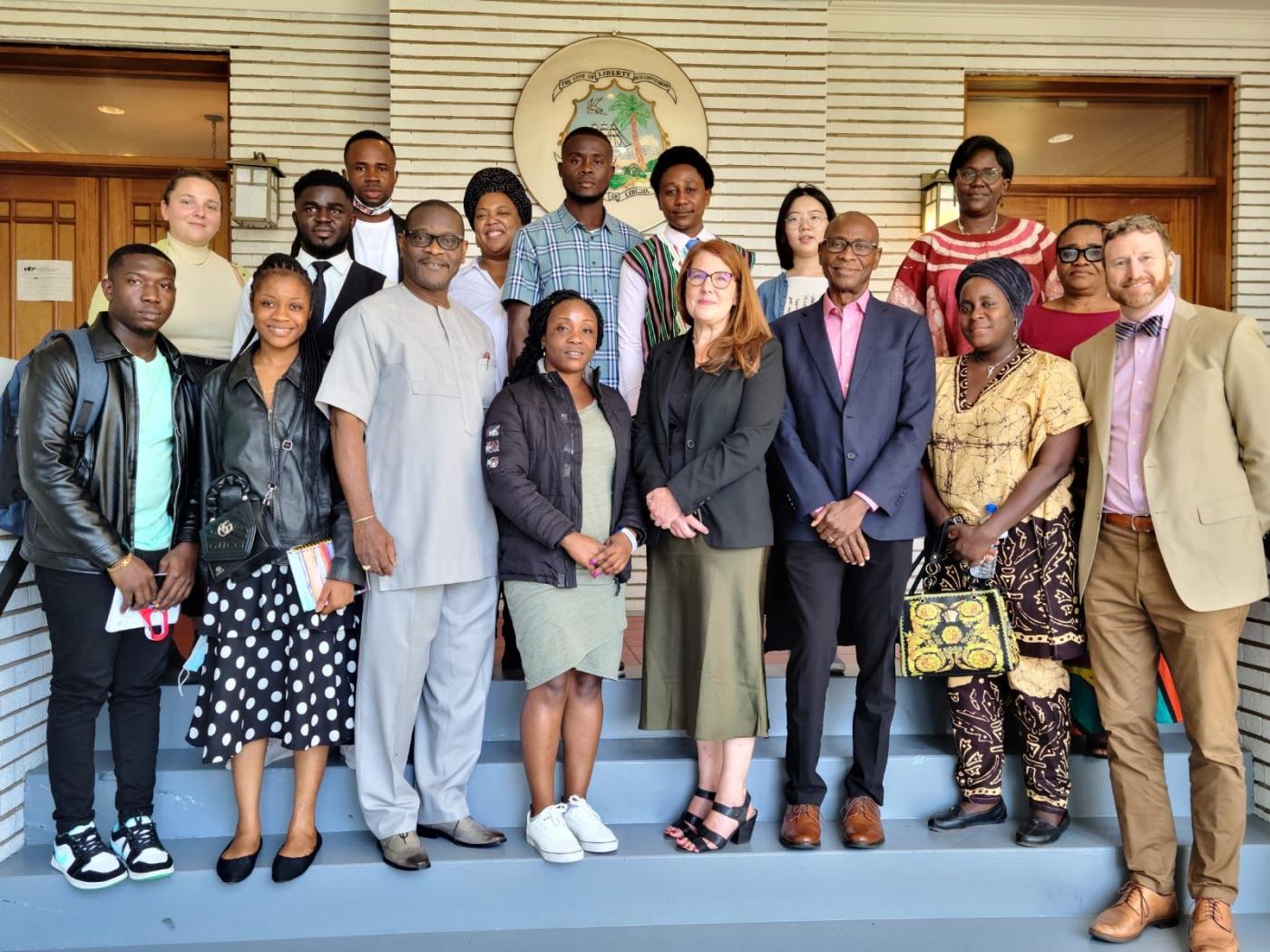
In early September, the UVA School of Architecture’s Center for Cultural Landscapes hosted seven students and two faculty from the University of Liberia for a week-long workshop focused on cultural landscape research methods. The trip—sponsored by the U.S. Embassy in Monrovia, Liberia in partnership with the University of Liberia’s Honors College and Office of the President—was an outgrowth of a multi-year collaboration between the University of Liberia and the University of Virginia School of Architecture. Organized by Allison James, a cultural landscape expert who has been associated with the Center for four years and has taught three courses on the cultural landscape history and interpretation of Providence Island, in Monrovia, this workshop connected University of Liberia and A-School students who had been interacting on Zoom for several years.
SEEDING A FRUITFUL COLLABORATION
In 2020, James was approached by the World Monuments Fund (WMF) to do a feasibility study of Providence Island, an 11-acre site located on the Mesurado River in the densely populated urban center of Monrovia, Liberia. The island, originally called Dozoa, or “Land in the center of water” by the Gola ethnic group who once occupied Cape Mesurado, is historically significant to 16 indigenous groups, the trans-Atlantic slave trade, and the Liberian diaspora. Later, it was the site where the nation of Liberia was founded by formerly enslaved African Americans from the United States. Despite the important role of the island in shaping the cultural, social, and economic history of Liberia, there is no information publicly available about the significance of the site, which according to the WMF’s website, is increasingly threatened by urban encroachment and neglect.
To assist the WMF and Liberia’s Ministry of Information, Cultural Affairs and Tourism in the development of Providence Island as a preserved historical site and urban park, James spent over a year doing in-depth field research, connecting with stakeholder groups, and doing deep listening sessions to understand the many complex historical narratives shaping the island. This is when she first met key partners at the University of Liberia, including students that she hired as research assistants and faculty colleagues who continue to serve as her collaborators and mentors.
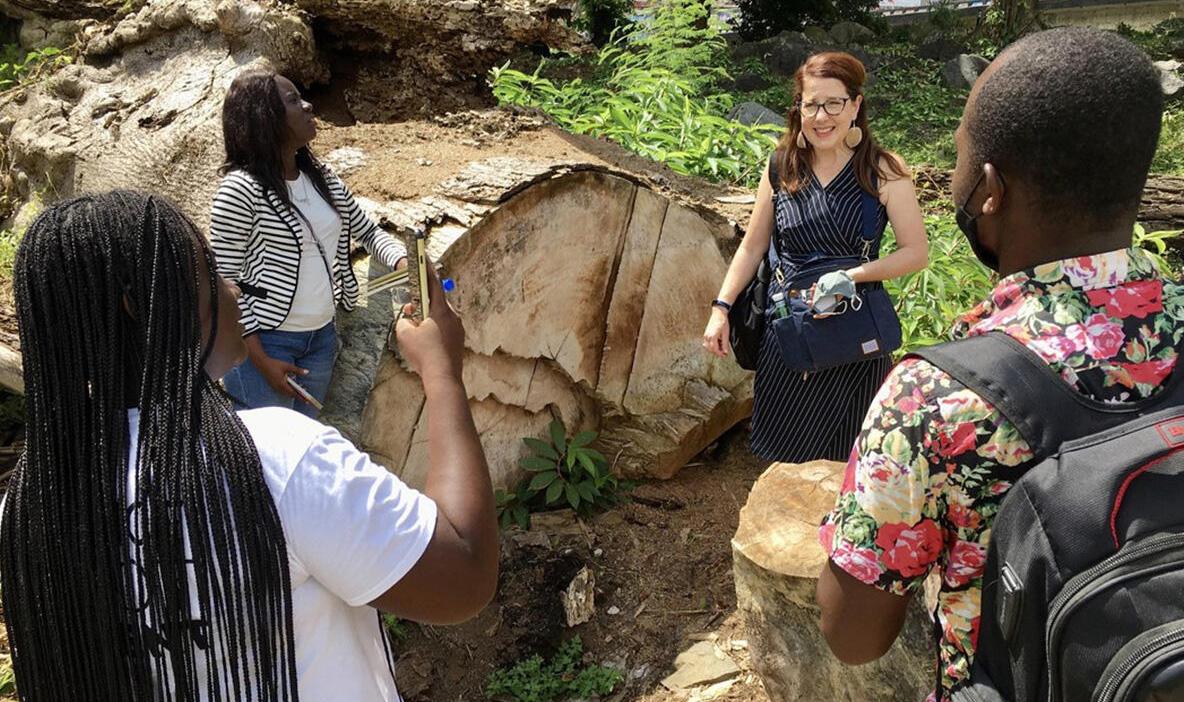
In the early days of the Providence Island project, it became clear to James that there was interest in connecting the University of Liberia to the University of Virginia. When planning her spring 2021 research seminar about Providence Island and cultural landscape interpretation methods, James recalls, “it didn't make sense to teach UVA students without asking for Liberian students to be a part of it. It just felt so one-sided.” So, James worked closely with Mamawa Freeman Moore, Dean of University of Liberia’s Honors College, who helped involve Liberian students in the project and served as the UL students’ on-the-ground advisor. Historian, Dr. William Allen, and Director of UL’s Center for Diaspora and Migration Studies, was frequently brought in as a guest lecturer to provide expertise on Liberia’s history. James also received strong support from her UVA colleagues—Beth Meyer, Professor of Landscape Architecture and founding director of the Center for Cultural Landscapes, and faculty in the Architectural History department, including department chair Sheila Crane, Andrew Johnston, Louis Nelson, Ellen Bassett, and Will Rourk. Notably, the U.S. Embassy in Monrovia, provided the Liberian students a meeting space at the American Center, computers, and reliable internet access (not a given in Monrovia). Through the powers of Zoom, the first of three trans-Atlantic UVA-UL courses were launched.
KNOWLEDGE SHARING ACROSS THE ATLANTIC
Michelle Colbert (MArH ‘22) spent nearly her entire graduate studies at UVA in the virtual classroom. When she participated in James’ first Cultural Landscapes of Liberia course, the experience didn’t feel much different from her other online classes, except that her research partner, Hariette Gaye, was four hours ahead and an ocean apart from Campbell Hall. Throughout the course, Colbert involved Gaye in her weekly class presentations, and through the experience, they became close friends who have remained in touch on Facebook.
For the course, each student took a different approach to interpreting Providence Island. “While my background is in architectural history,” Colbert said, “I kind of decided to make a hard left and look at the current landscape instead of the drawn-out colonial narratives. I wasn’t really interested in reading the papers of colonizers, so I looked at what the landscape looked like today, and I found the vibrant use of color in the landscape. Liberia's national colors are represented on the infrastructure of the roads, on the curbs, on the buildings. Everything is red, white, and blue, which marries the idea, or the nations of the U.S. and Liberia together in a pretty poetic way.”
Through the collaboration, UVA students received incredible insight into Liberian culture and great access to local knowledge. For instance, Gayflor Wesley, a geologist and former UL student who joined in James’ classes, volunteered to go to the Mesurado River and interview fishermen who follow very traditional fishing practices and use traditional carved wooden boats. Wesley went through the process of breaking down these practices to UVA landscape architecture students, which proved invaluable for advancing the group's research projects.
For Kristan Pitts (MUEP ‘24), the course raised her moral consciousness. “One of the things this experience got me thinking about is transnational Black solidarity, the connection between domestic civil rights movements and international struggles in Black/African diasporic countries for human rights, independence, and resistance to colonialism." Growing up Black and low-wealth in the South has informed Pitts’ orientation to the world, as well as her work as a student, minister, and community organizer to advance racial justice. However, until this course, her work had a limited global perspective. Pitts continues to wrestle with a fundamental question raised in all of James’ Providence Island courses: “how can studying cultural landscapes be used as a tool to advance a more just and equitable society?"
In the three courses, James fostered a collaborative learning environment where knowledge and resource exchange worked across all directions. The A-School students gained a better sense of the lived cultural experiences of Liberians, and greater awareness of the indigenous presence on the Island—including the networks of exchange through medicinal practices and spiritual burial practices. The Liberian participants learned hard skills, like archaeological practices, point cloud mapping, and translating drone data into a 3D map of the island. Thomas Gmawlue Jr, a UL graduate now pursuing a graduate degree in civil engineering in India, was hired as James’ research assistant. Gmawlue says, “Professionally, I learned how our landscape and structures can tell our history. I can now read landscapes and unveil historical layers just by analyzing structures. This project made me understand that designs are not just for aesthetics or personal preferences, but they can say unspoken things about families and regions.”
By the close of 2021, James' courses had involved the collaboration of twenty-three UL undergraduate students. The students spanned a wide array of disciplinary backgrounds, from geology and engineering, to medicine and education. As Dean Moore recounts, “students at UVA were like mentors in many ways, but they didn’t show it. And [the UVA students] were learning from the Liberian students. It became a really rich cultural learning experience at all levels.”
CONNECTING PROVIDENCE ISLAND TO PETERSBURG, VIRGINIA
James was in conversation with the University of Liberia’s President Julius Nelson Jr. to identify ways to evolve the cross-cultural exchange between UL and UVA. President Nelson encouraged James to go to Petersburg, Virginia to see if there was anything to dig up on Joseph Jenkins Roberts, the first president of Liberia and the first president of the University of Liberia.
A successful merchant in Petersburg, Roberts emigrated to Liberia as part of the resettlement efforts of the American Colonization Society in 1829 on the ship Harriet, from the port of Norfolk, VA. One hundred and sixty people emigrated with Roberts from the free Black community of Pocahontas Island. Prior to that, in 1823, Colston Warring, who was a trustee of the free Black, Gillfield Baptist Church in Petersburg made an exploratory trip to Liberia upon the request of his congregation to examine the Colony. Warring returned and arranged to bring one hundred people back to Liberia from Petersburg in 1824, including his own family on the ship Cyrus. His four-year-old daughter Jane emigrated with the family and would later marry Joseph Jenkins Roberts and become the first, First Lady of Liberia.
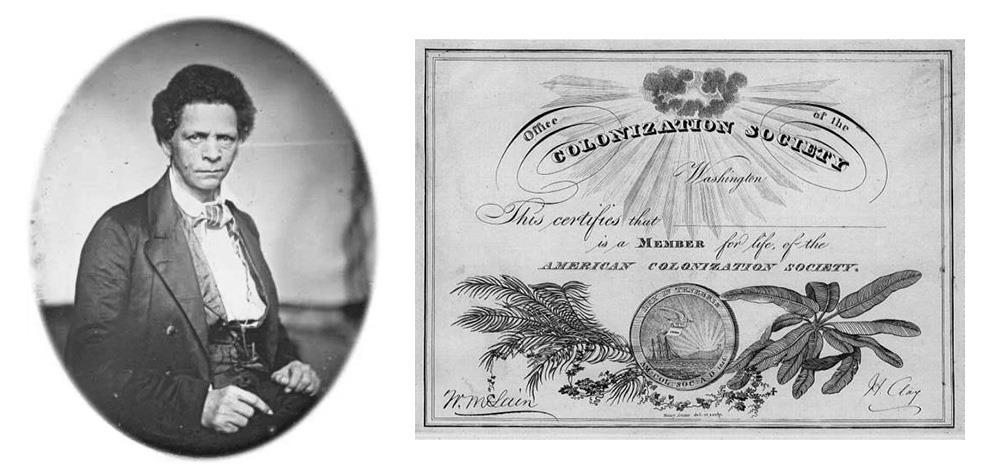
While there were no physical remains of Roberts’ home in Petersburg, James met Richard Stewart, director of the Pocahontas Island Black History Museum in Petersburg—one of the oldest African American communities in the U.S.—who could tell the story of Joseph Jenkins Roberts. Stewart, along with historians at the Fluvanna Historical Society, staff at the Library of Congress who are deeply familiar with the American Colonization Society archives, and fellow A-School colleagues became a constellation of experts that James wanted to involve in a U.S.-based workshop for her UL and UVA students. In 2021, James secured a State Department Grant from the U.S. Embassy in Monrovia, which supported seven students and two faculty from UL to attend a week-long workshop in the U.S. from August 31–September 8, 2022.
The workshop introduced the UL-UVA group to archival materials, field methods and sites that document under-explored historical connections between Providence Island, Monrovia and Pocahontas Island, Petersburg. Their rigorous itinerary started with a trip to Washington D.C. to visit the National Museum of African American History and Culture, meet with Liberian Ambassador to the U.S., George S.W. Patten Sr. at the Liberian Embassy, and scour the Liberia collections at the Library of Congress (LOC). Laverne Page, who recently retired as Area Specialist for the African and Middle Eastern Division at the LOC, spent her last day on the job generously leading the group through the American Colonization Society archives, maps, and other documents related to the Virginia home and cultural landscape of President JJ Roberts. UVA’s Beth Meyer and Louis Nelson joined too to share their expertise of the archives.
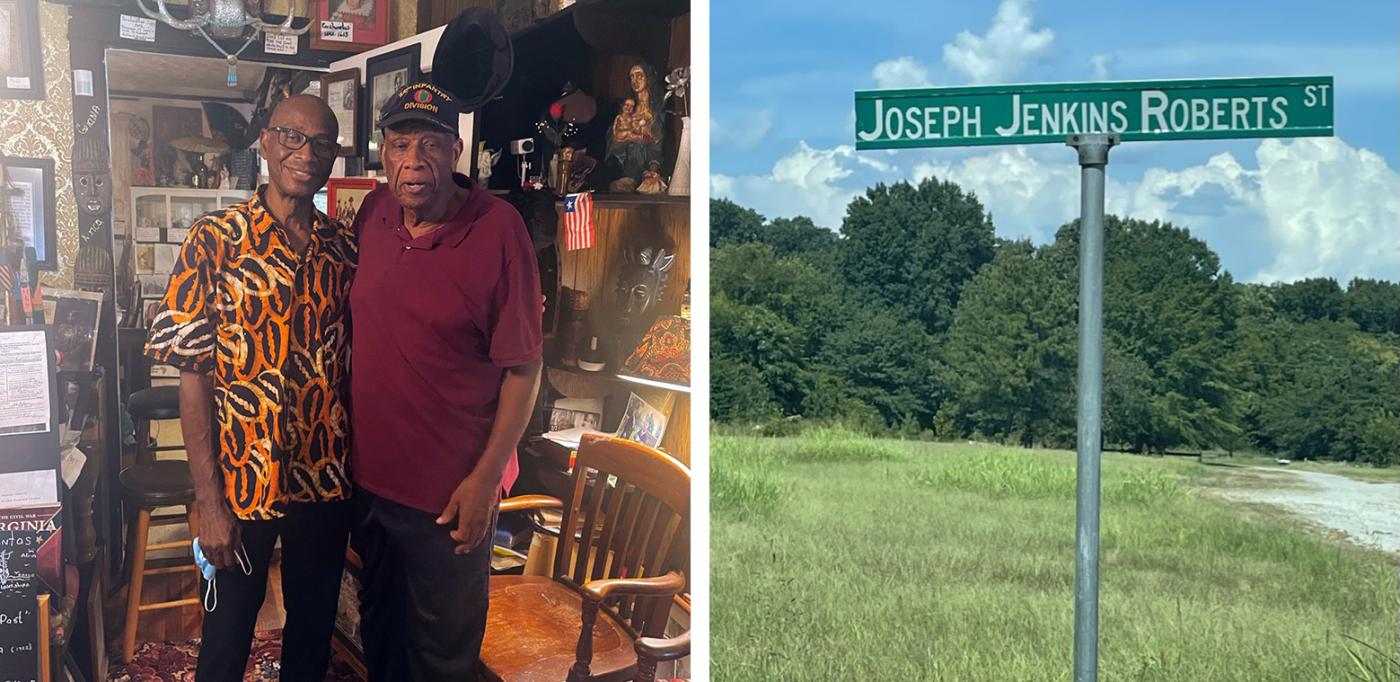
From D.C., the group made their way to Petersburg, which according to James, “was emotional for everybody,” since this was the home of Liberia’s first President, Joseph Jenkins Roberts, a critical figure in the establishment of the country. Aside from a small monument and a street named in his honor, there was not much else to commemorate Roberts, except for at the Pocahontas Island Black History Museum, where there was a giant banner on the back of the house acknowledging Roberts’ place in U.S. and Liberian history. “It was just a moment of recognition. It really legitimized … it made that place real in their minds, and it really made the group want to learn more,” said James.
For historian William Allen, a UL faculty member on the trip, one of his happiest moments was learning more about Joseph Jenkins Roberts from museum director Richard Stewart, who had family members that accompanied Roberts and emigrated to Liberia in 1829. Allen learned that Roberts and his father were boat men on the James River who moved tobacco and other crews from one location to another. “The link between what Roberts did on Pocahontas Island as a free man earning money, and that he brought some of that money across the Atlantic to Liberia, and invested into businesses—that was a very important moment in the narrative.”
Gayflor Wesley, a former UL student who attended the U.S. workshop said, “the connection between Pocahontas Island and Providence Island is something that I didn’t learn in grade school. So, visiting Petersburg and listening to Mr. Stewart’s presentation has established in my mind a clear understanding about the connection and stories governing the two islands.” Wesley added that another important thing he learned about the two islands were the trees planted in memory of the people who served to protect the respective islands.
On Pocahontas Island, there are several ancestral sites where people were buried underneath mulberry trees. In West Africa, and Liberia, indigenous people planted cotton trees over burial sites, believing that the spirit of that ancestor is embodied in that tree. There were two significant 200-year-old ancestral cotton trees on Providence Island that were the site of peace treaties signed between the indigenous and settler groups, meaning the free and formerly enslaved people who emigrated post-1822 from the U.S. “The link between the trees is just too incredible. That demonstrates knowledge sharing, it demonstrates the passing on of spiritual practices across the Atlantic, it demonstrates intangible cultural practices,” said James.
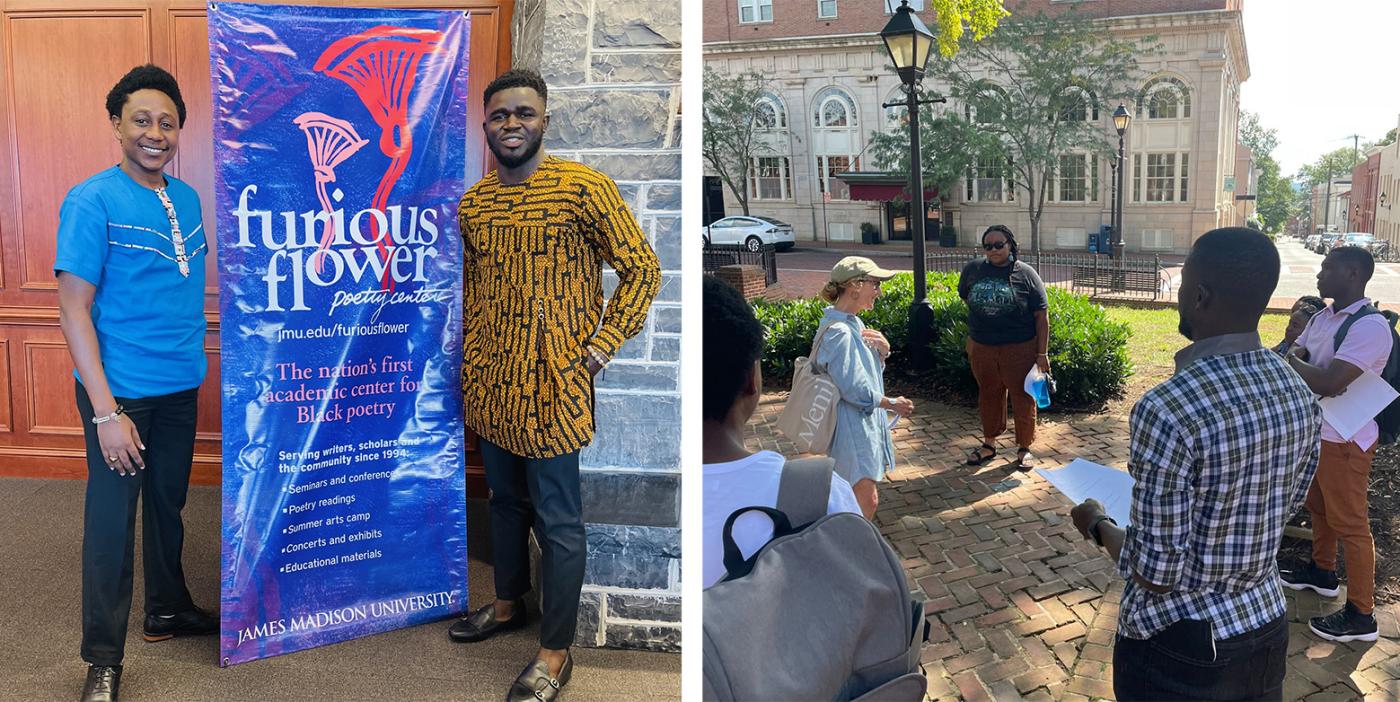
Other highlights from the week-long workshop included a trip to the Furious Flower Poetry Center at James Madison University (the first Black academic poetry center in the U.S.), where UL grad, Thomas Gmawlue Jr. recited an epic 5-minute-long poem that left everyone shocked and deeply moved. The UL group met up with the UVA students and Beth Meyer, Professor of Landscape Architecture, for a guided history walk of Charlottesville and its racialized topography. At the Bremo Plantation Slave Chapel in Fluvanna, Virginia, UVA’s Will Rourk led a point cloud mapping workshop with descendant Horace Scruggs.
At the end of the very full week was a final dinner party at James’ house, which brought together the nine Liberians with current and former UVA students, who had previously only known each other through Zoom. Michelle Colbert, who now lives and works in Richmond, came to Charlottesville for the party especially to reconnect with her friend and former UL classmate, Hariette Gaye. Much to Colbert’s delight, Hariette was wearing a beautiful red dress representing her county.
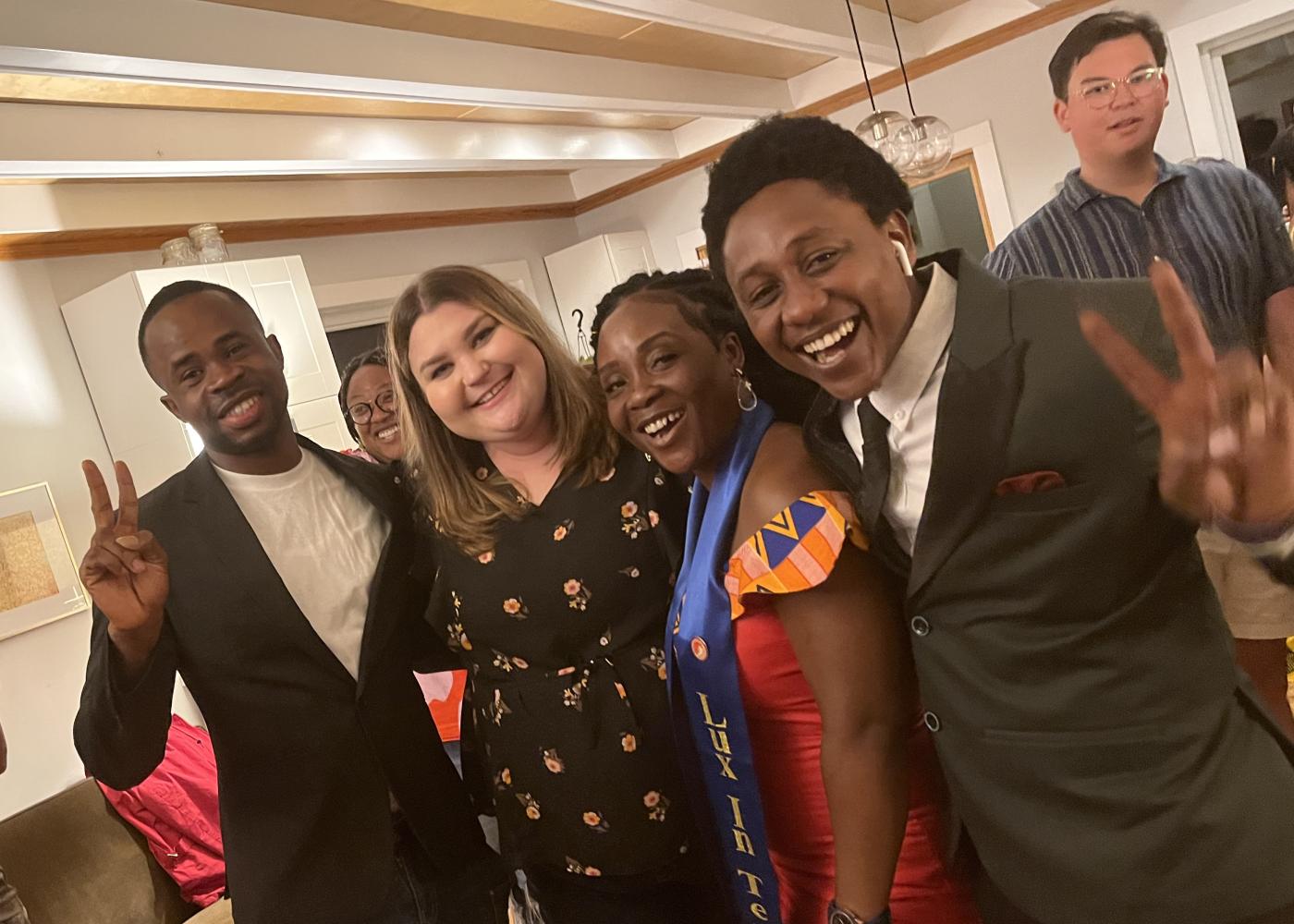
AFTERWORD
The UL-UVA workshop marked a transition between what has been a valuable experience of learning in the classroom and the field towards a multi-year research collaboration. Being formalized this fall, the Liberia-Virginia Cultural Landscape Research Collaborative, a partnership between the Center for Migration and Diaspora Studies at the University of Liberia and the Center for Cultural Landscapes at the University of Virginia will seek community advisors and participants as well as explore funding sources for a multi-year project. They hope to uncover the rich cultural landscape practices created and experienced by formerly enslaved people who lived on Pocahontas Island in Petersburg, Virginia and emigrated to Africa as early settlers of Liberia; to understand how these Black Atlantic diasporic communities shaped the built environments in both places. The project aims to gain a deeper understanding of the networks of exchange and knowledge transfer across the Atlantic from the 1600s through the early 1900s, while establishing new collaborative research communities in the present.
ADDITIONAL RESOURCES
To learn more about the complex and contested history of Liberia and its ties to the U.S., listen to Dr. William Allen’s lecture at the UVA School of Architecture from October 6, 2021, and check out these recommended reads.
Banton, Caree A. More Auspicious Shores: Barbadian Migration to Liberia, Blackness, and the Making of an African Republic. Cambridge University Press, 2019.
Clegg, Claude Andrew. The Price of Liberty: African Americans and the Making of Liberia. University of North Carolina Press, 2004.
Cooper, Helene. The House at Sugar Beach: In Search of a Lost African Childhood. Simon & Schuster, 2008.
Fairhead, James, Tim Geysbeek, Svend E. Holsoe, and Melissa Leach. African American Exploration in West Africa: Four Nineteenth-Century Diaries. Indiana University Press, Bloomington, IN, 2003.
Moore, Wayétu. She Would Be King. Graywolf Press, 2018.
The Liberian Letters. University of Virginia Library, Electronic Text Center, 1998.
Tyler-McGraw, Marie. An African Republic: Black & White Virginians in the Making of Liberia. The University of North Carolina Press, Chapel Hill, 2007


